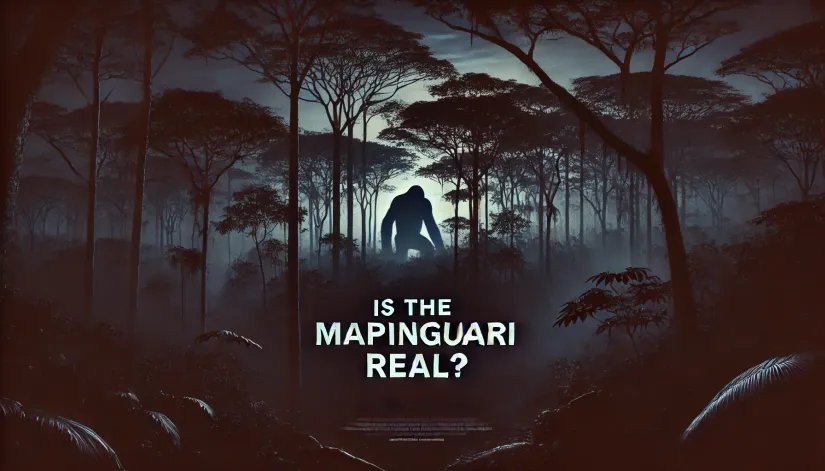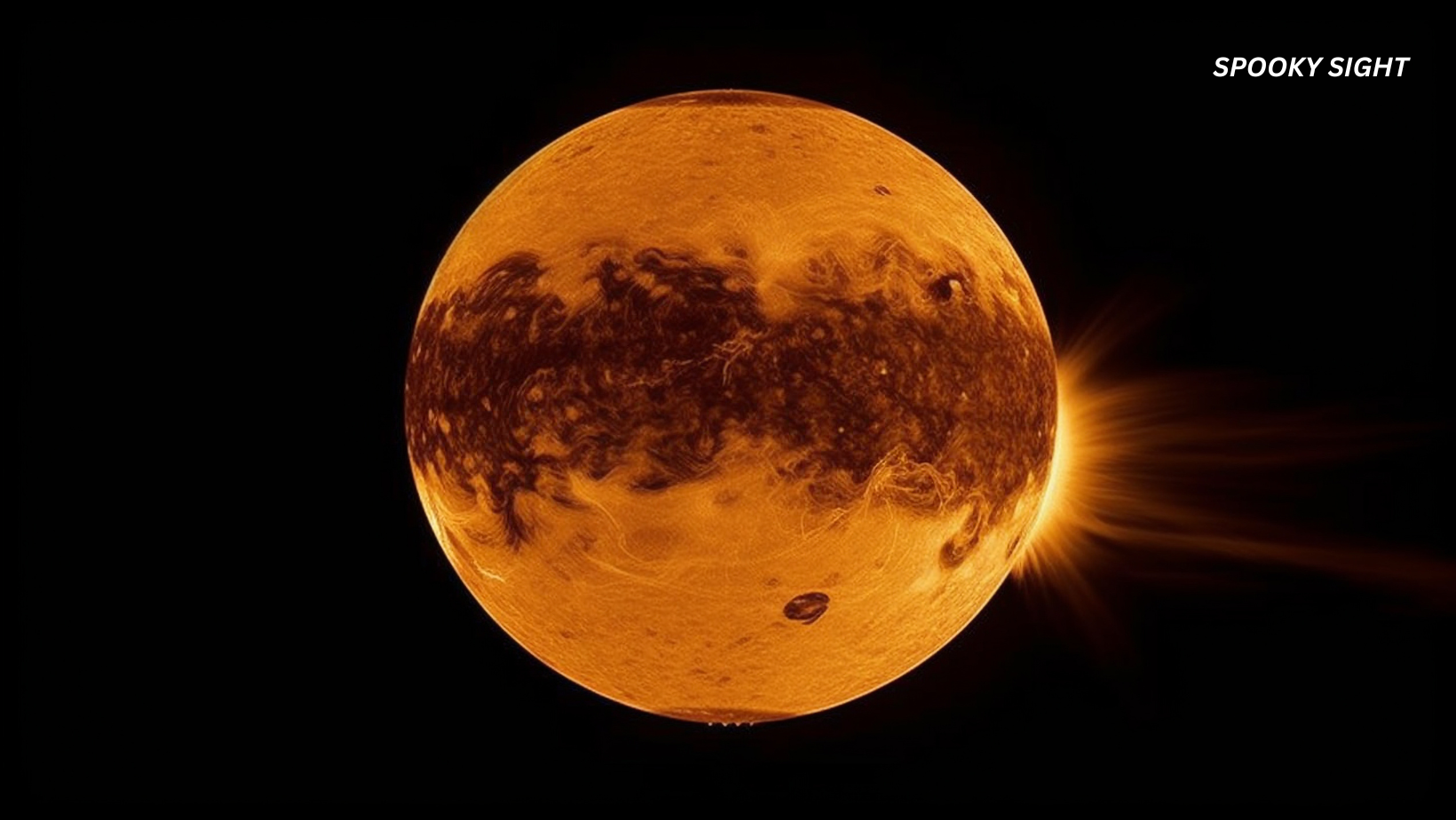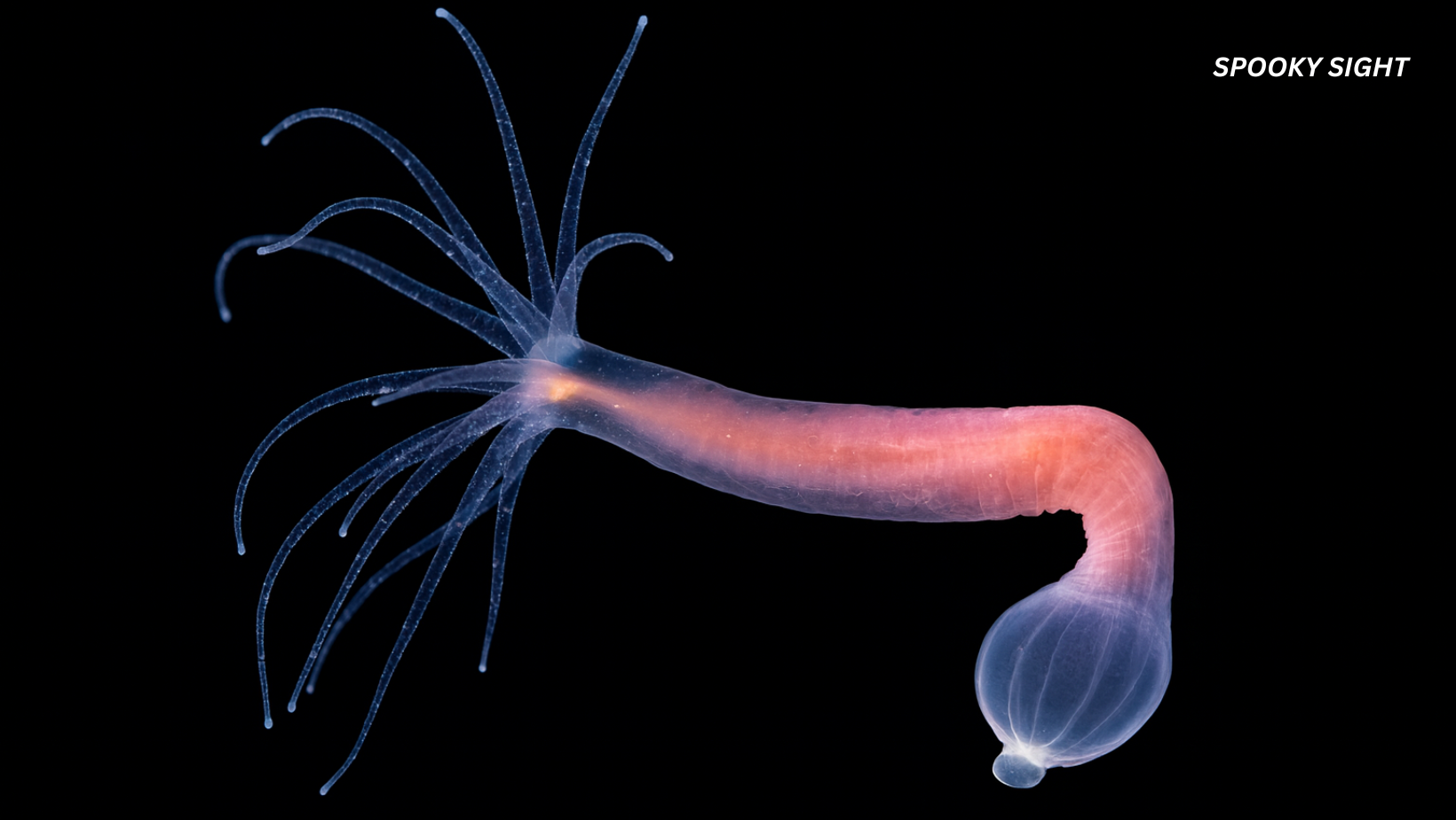We all know about the famous Bigfoot roaming the forests of the Pacific Northwest and the Loch Ness Monster lurking in Scotland’s depths.
But if we head south to the vast, uncharted territories of the Amazon Rainforest, we will discover another intriguing cryptid: the Mapinguari. A mythical beast that, according to legends, had the nasty habit of twisting off the heads of humans and devouring them
In this article, we’re diving into the legend and the scientific theories behind this mysterious creature.
In this article:
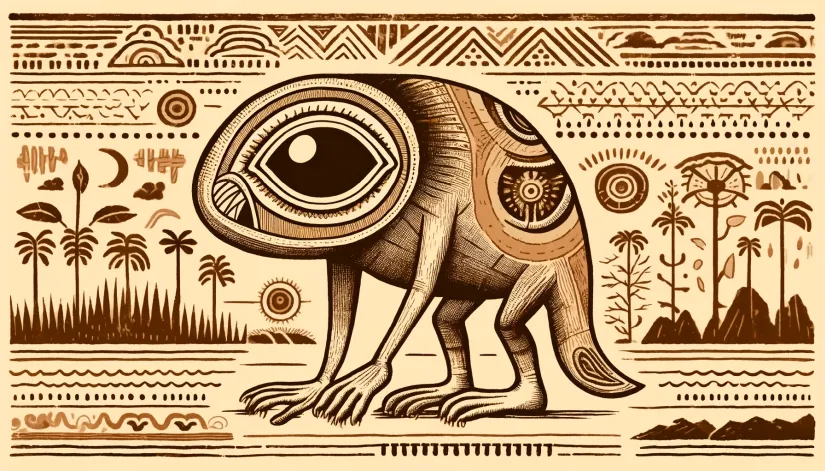
What is the Mapinguari?
First things first: what is the Mapinguari?
The Mapinguari—whose name in the Tupi-Guarani languages translates to “fetid beast” or “roaring animal”—has inspired legends across generations in the Amazon.
According to anthropologist Felipe Ferreira Vander Velden, its name combines the Tupi-Guarani words “mbappé,” “pi,” and “guari,” which together mean “a thing that has a bent or crooked foot or paw.” This aligns with the creature’s legendary characteristic of having backward-facing feet (see below).
In addition to its Tupi-Guarani roots, this cryptid is known by other names depending on the region and tribe. For example, the Karitiana tribe refers to it as “kida harara” and the Machiguenga people as “segamai.”
Interestingly, the Mapinguari legend extends far beyond Brazil, reaching into Bolivia and Venezuela, where the creature is known by various names, such as Mpinguary, Cape-lobo, and Juma.
It is pretty evident that the cryptid is important to locals. It is so important that over 400 indigenous groups—speaking more than 270 languages—have stories about it.
This peculiar aspect makes us wonder: Could there be more to the story? Is it a simple coincidence that so many tribes know about this mysterious cryptid?
As for the outsiders, one of the earliest written accounts comes from explorers in the 18th and 19th centuries who ventured into the uncharted territories of the Amazon. They documented stories of a giant, unknown animal that roamed the rainforest—a creature unlike anything known to science.
The geographical context here is key. The Amazon Rainforest is massive—covering over 2.1 million square miles—and remains one of the most unexplored places on Earth. With such an expansive and dense environment, it’s not surprising that legends like the Mapinguari thrive.
New species of plants and animals are still being discovered regularly, fueling speculation about what else might be hiding deep in the unexplored regions.
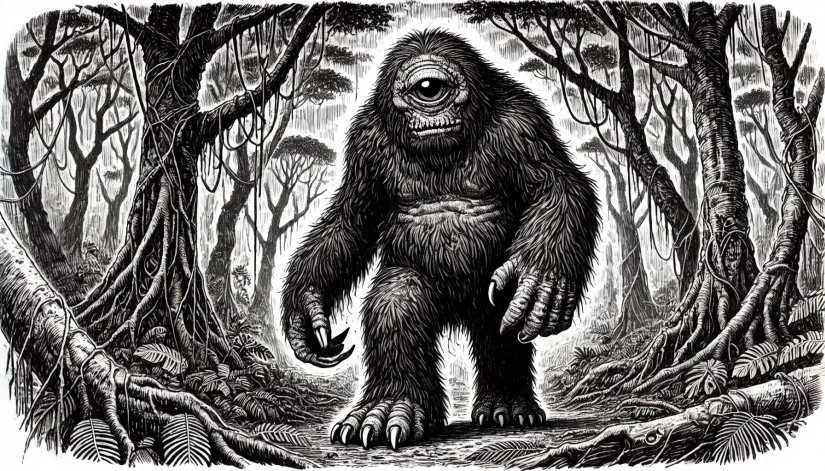
What Does the Mapinguari Look Like?
Alright, let’s get down to it—what does this Mapinguari actually look like? Well, the descriptions vary from realistic to wildly fantastical.
Size and Appearance
David Oren, a noted investigator of the Mapinguari, compiled a detailed description in 1993 from eyewitness reports.
According to Oren, the Mapinguari is tall. Some accounts say it reaches over two meters (around 6’6″ tall) when standing upright.
Its powerful, stocky body is covered in long, coarse fur that ranges from reddish to brown to black (which is likely why the creature is often compared to a giant primate, with some describing it as having the strength to snap tree roots with each step).
Related: Hillbilly Beast of Kentucky: A Bigfoot-like Cryptid with a Dark Twist?
However, unlike primates, this odd cryptid has claws similar to the giant anteater (Myrmecophaga tridactyla). But these claws are far more prominent—like the giant armadillo (Priodontes maximus), with almost twenty-centimeter claws, the largest claw-to-body ratio of any known animal.
The more disturbing accounts speak of a cyclopean eye, right in the middle of its forehead. However, Oren notes that this feature likely originates from Portuguese folklore of cyclopes rather than direct sightings.
Equally unsettling is the claim that the Mapinguari has a mouth on its stomach, which can emit horrifying screams and a foul stench (often compared to rotting flesh).
Bulletproof Fur
Interestingly, the creature is sometimes referred to as the macaco de borracha (Portuguese for “rubber monkey”)—a reference to its tangled fur, which supposedly repels bullets. This name comes from an account in 1913 that described a forest giant with this impenetrable hide.
This suggests the cryptid may be invulnerable to traditional weapons (like spears and arrows) and bullets. These projectiles bounce off its tough hide, which is covered in dermal ossicles (a fancy term for bony skin plates). The only vulnerable spot? Eyes, mouth, or its navel.
SpookySight recommends:
- Top 11 Most Bizarre and Terrifying Native American Cryptids
- Is the Grootslang Real? Discover The Legendary Beast of Africa
- Barmanou: The Beast of Chitral. Real or Myth?
Some unverified reports claim that hunters who have allegedly shot at it noticed how standard bullets simply bounce off its skin, with some using specialized lead shotgun slugs to take it down.
Our team takes these alleged reports with a grain of salt. We believe that most could be either fabricated or exaggerated.
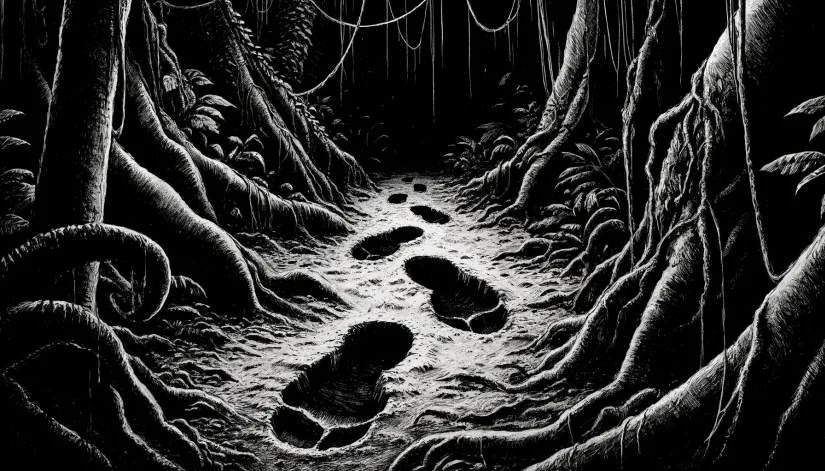
Diet and Behavior
While some legends suggest the Mapinguari is a man-eating monster, more grounded accounts describe it as primarily herbivorous, primarily feeding on the fibers of the Oenocarpus batata palm.
The cryptid is also quite challenging to track. Unverified eyewitness reports speak of two types of tracks. The first kind is round, pestle-like impressions in the ground, and the second resembles human footprints with only four toes turned backward.
Its dung (often compared to that of a horse) can allegedly be found on dry land (unlike tapirs, which defecate in water) and is full of barely digested plant material, like leaves and stems.
Reported Sightings
Over the years, the legend of the Mapinguari has been kept alive by some alleged sightings.
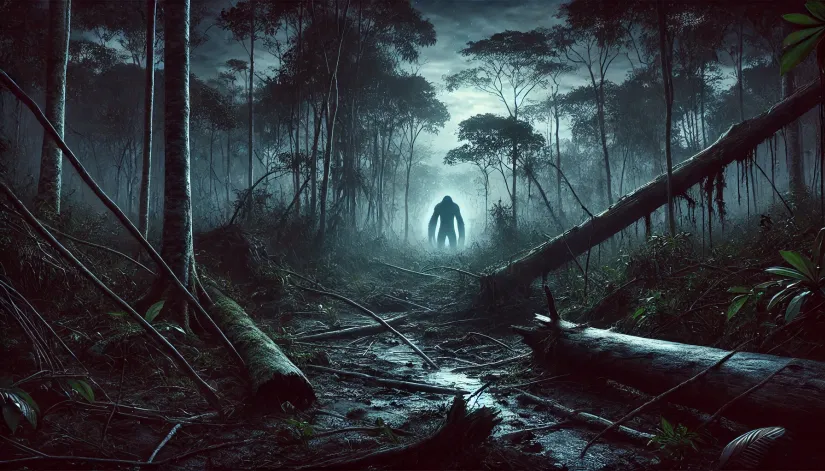
Lucas Karitiana Sighting
The Lucas Karitiana sighting reportedly happened around 2003 in the western Amazon, near an area referred to by the Karitiana tribe as “the cave of the Mapinguari.” It’s one of the most well-known sightings tied to the legendary Mapinguari.
So, what exactly happened? Lucas Karitiana, a member of the Karitiana tribe in Brazil, claimed that his son encountered the Mapinguari while hunting in the jungle. According to the story, the creature approached the village, emitting a foul odor that caused his son to faint.
When they returned to the site, they found a trail of destruction that Lucas described as looking “as if a boulder had rolled through” the trees and vines, knocking everything down in its path.
However, while this account is considered one of the more detailed and specific Mapinguari sightings, it’s important to note that no concrete evidence has ever been found to validate the story.
Dr. David Oren’s Expeditions
One of the most notable modern efforts to uncover the truth behind the Mapinguari was led by Dr. David Oren, a Brazilian biologist and former director of zoology at the Goeldi Museum in Belém.
Throughout the 1990s and early 2000s, Dr. Oren conducted extensive expeditions deep into the Amazon Rainforest, driven by local reports and eyewitness accounts of the creature.
Related: El Pombero: The Enigmatic Forest Spirit of Guaraní Mythology
His fascination stemmed from the striking similarities between the Mapinguari’s described features and those of the extinct giant ground sloth. He even hypothesized that the cryptid could be a surviving member of this prehistoric species, hiding in the vast, uncharted regions of the Amazon.
But what exactly did he find? Well, not much.
Oren collected various pieces of evidence (including hair samples and fecal matter), but testing results were largely inconclusive. Some hair samples were later identified as belonging to known animals—such as the agouti. And some fecal samples turned out to be from giant anteaters or tapirs.
One of the more intriguing pieces of potential evidence was a photograph Oren took of claw marks on a tree—eight marks, each about a foot long and an inch deep. Despite these clues, nothing definitively linked the findings to the Mapinguari.
In 2001, geneticist and skunk ape investigator John Lewis claimed to have extracted ground sloth DNA from dung he encountered during an expedition to Brazil.
Theories
Regarding the Mapinguari, theories are as dense as the Amazon jungle itself.
Prehistoric Creature?
One of the most compelling theories comes from Dr. Oren himself. He proposed that the creature might be a surviving member of the giant ground sloth species, specifically the Megatherium. These colossal beasts roamed South America during the Pleistocene era. However, they were thought to have gone extinct around 10,000 years ago.
Dr. Oren’s hypothesis suggests that the vast, unexplored regions of the Amazon Rainforest could still harbor remnants of these ancient creatures.
In his 1993 paper, published in Goeldiana Zoologia, he laid out his theories, drawing parallels between Indigenous descriptions of the Mapinguari and scientific knowledge of the Megatherium.
Its unusual height, long claws, and shaggy fur all seem to line up.
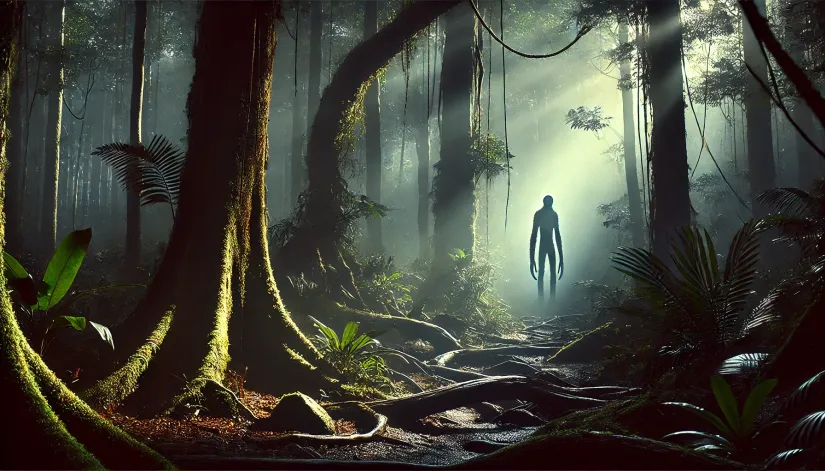
Misidentified Animal
Another angle to consider is the possibility of misidentification. The Amazon is home to some pretty wild creatures—think giant anteaters or spectacled bears—that could, under the right conditions, be mistaken for something more mysterious.
The dense foliage, low visibility, and the human tendency to embellish stories might have contributed to the Mapinguari sightings.
However, the creature’s unique features—like its backward feet, stomach-mouth, and gut-wrenching odor—don’t match up with any known animals. All these physical particularities may be exaggerations.
Conclusion
Let’s toss some facts into the mix. The Amazon covers a mind-blowing 2.1 million square miles, and experts estimate that only about 5% of it has been explored thoroughly. New species of plants and animals are discovered regularly—some say thousands each year.
With stats like that, is it really so far-fetched to think a cryptid like the Mapinguari could be out there? We think there’s a solid chance.
However, some of the more exaggerated physical characteristics of the Mapinguari—like backward-facing feet and a gaping mouth on its stomach—seem too fantastical to be real.
We at SpookySight believe these traits were likely added over time to make the creature more menacing, or perhaps to elevate it to the status of a jungle deity. Such embellishments are common in folklore, often turning a mysterious animal into something more supernatural.
It’s also worth mentioning that our in-house team carefully researched, analyzed, and cross-referenced all the information in this article. Other websites will claim a lot more alleged Mapinguari sightings, expeditions, and legends. However, most of that information (including names and dates) is likely fabricated or exaggerated.

